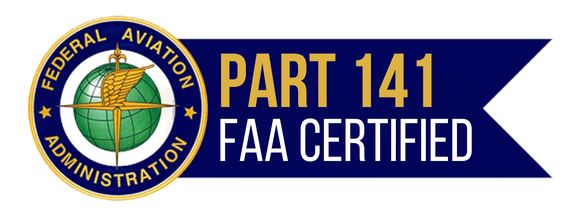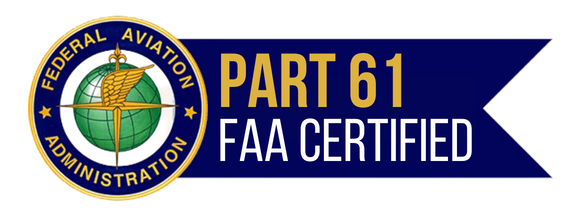Promotional Catalog/India-Issue-November 2024.
STEPS TO BECOMING AN
AIRLINE PILOT
Duration: Full Time-Eight-Ten Month/s
BASIC REQUIREMENTS TO BE AN AIRLINE PILOT IN THE UNITED
STATES GENERALLY
|
One: |
In the United States, an aspiring pilot does not require a college |
|
Two: |
You must be minimum 18 years of age to begin flying as a |
|
Three: |
You must have 20/20 eye vision (corrective lenses permitted) and pass 1st class medical examination administered by an AME. |
|
Four: |
You must qualify to be and earn a Commercial Pilot License. |
|
Five: |
You must have flight experience of 1500 hours to meet the |
|
Six: |
You must pass a background check and must not have any felonies. |
|
Seven: |
MUST speak, read, write and comprehend in English language. |
II.
QUALIFYING TO BE AN AIRLINE PILOT
Please Note: All foreign students participating in Flight Training Programs at OCFC are trained under a training course outline and syllabus that meets the curriculum requirements for the program in which the student is enrolled and approved by the Federal Aviation Administration under Part 141 of Title 14 of the Code of Federal regulations and contained in appropriate Appendix of the Part.
STEP ONE: EARN YOUR PRIVATE PILOT CERTIFICATE.
At “OCFC” you begin your training by concurrently participating in Ground school and start flight training in a single engine aircraft which will focus on flight training fundamentals and will set the stage for advanced certification and ratings. The ground school component comprises of 36 hours of actual in person training in a classroom setting while permitting students to participate in online web-based ground training. This course is designed to help the student pilot prepare for the
Private Pilot knowledge exam required by the Federal Aviation Administration pursuant to 14 CFR 61.103 to satisfy the requirements set by the FAA to receive a private pilot certificate.
The flight training component shall comprise of the following:
55 hours of Dual Flight Time
10 hours Solo Flight Time;
36 hours of Ground Training
35 hours Pre and Post Flight Briefings;
STEP TWO: ADD INSTRUMENT RATING
After completing your Private Pilot Training and obtaining your FAA certification as a Private Pilot, the next step is to obtain the knowledge, skill and aeronautical experience necessary to meet and earn an Instrument rating which will allow a pilot to fly under Instrument flight rules (IFR) and in all kinds of weather.
A student must demonstrate through written and flight tests and appropriate records that they meet the knowledge, skill and experience requirement necessary to acquire and earn an Instrument Airplane Rating. A Student must hold at least a Class II medical certificate and have a Private Pilot Certificate or higher.
The Instrument Rating training component shall comprise of the following:
25.3 hours of Dual flight training.
21.00 hours Ground and Simulator training.
21.6 hours of Pre and Post flight Briefings.
STEP THREE: EARN YOUR COMMERCIAL PILOT CERTIFICATE.
The next step after completing your Instrument rating towards your Airline Pilot career is to earn a Commercial Pilot certificate upon successfully completing of which ultimately allows one to be legally paid to fly. In this flight training program, a student will obtain the knowledge, skill and aeronautical experience and fly to a higher standard necessary to meet the Commercial Pilot Certification requirements.
A student is required to demonstrate through written test, flight test and appropriate records that they meet the knowledge, skill and experience requirement necessary to acquire and earn their Commercial Pilot Certificate with an Airplane Category and Class Rating.
A Student must hold at least a Class II medical certificate and have a Private Pilot Certificate, Instrument rating under our Part 141 approved syllabus or higher.
The Commercial Pilot Training Program shall comprise of the following:
57.5 hours of Dual flight training.
62.5 hours of Solo Flight time.
35 hours of Ground Training.
21.00 hours in a Simulator.
26.3 hours of Pre and Post flight briefings.
STEP FOUR: ADD MULTI-ENGINE RATING
Adding a Multi-Engine Rating to the Commercial Pilot Certificate is the last step before building the aeronautical experience to meet the hiring minimum requirements to pursue your career as an Airline Pilot and to fly large passenger, cargo and charter companies/airlines. In this flight training program, a student will obtain the knowledge, skill and aeronautical experience and fly to a higher standard necessary to meet and acquire an Additional Multi-Engine Land Airplane Class Rating.
Here, a student must demonstrate through written and flight tests and appropriate records that they meet the knowledge, skill and experience requirement necessary to meet and acquire the additional Multi-Engine Land Airplane Class Rating.
A student must hold at least a Class II medical Certificate and have at least a Commercial Pilot Certificate.
The Multi-Engine Course at OCFC includes the following:
22 hours of dual flight training in a multi-engine aircraft.
15 hours of Ground Training and
18 hours of Pre and Post flight briefings.
STEP FIVE: (Optional) EARN A FLIGHT INSTRUCTOR CERTIFICATE TO
One of the advantages of earning and obtaining a Flight Instructor Certificate is to be able to earn a living flying while earning the flight experience required and necessary to meet the requirements of the Airline Transport Pilot (ATP) Certificate by the airlines. To be an Airline Pilot and to be able to transport passengers and get paid to do that is a requirement by the airlines within the United States is to have 1500 hours of flight experience. Thus, it would be prudent for any student aspiring to be an airline pilot to earn a flight instructor certificate and get paid to instruct students while gaining the requisite flight experience while earning a decent living in doing so. The only disadvantage to foreign students coming to the United States to qualify to be an airline pilot is that one may pursue the training to be a Certified Flight Instructor but may not be gainfully employed within the United States under an M-1 visa. Thus, a foreign student completing a flight instructor program at OCFC may gain flight training experience and obtain flight experience necessary to be an airline pilot in India or elsewhere and without
an expectation of getting paid to do so. Restrictions may apply. Thus, enrollment of foreign students into Flight Instructor Certification program to gain flight experience is discretionary and OCFC shall have the ultimate discretion and shall exercise its discretion to enroll a student into this program and exercise of such discretion shall be final and binding.
While “OCFC India” and “OCFC-Global”, contemplates and plans to open flight training centers around the globe including India, within the next decade, students completing their training at OCFC may be gainfully employed at OCFC flight centers abroad and/or in their country of origin and subject to local governmental ordinances, rules and regulations.
Students participating in the Flight Instructor will obtain the knowledge, skill and aeronautical experience necessary to meet the flight instructor certification requirements under Part 141 of our syllabus as is approved by the Federal Aviation Administration under Title 14 of the Code of Federal Regulations and described in Appendix F of Part 141.
Here, a student must demonstrate through written and flight tests and appropriate records that they meet the knowledge, skill and experience requirement necessary o meet and acquire the Flight instructor Certificate. A student must hold at least a Class II medical Certificate and have at least a Commercial Pilot Certificate with an Instrument Rating.
The Flight Instructor Certificate Program comprises of the following:
21 hours of dual flight training. Plus
63 hours of ground, pre and post flight briefings.
III.
8-10 MONTH-FULLTIME AIRLINE PILOT TRAINING PROGRAM
TRAINING COST, FEES AND EXPENSES INCLUDING
SHARED ACCOMMODATION FOR A PERIOD OF TEN (10) MONTHS
- Total Fees payable to “OCFC”:IF IN LUMPSUM ) $55,000.00
- IF IN INSTALLMENTS ) $62,500.00
- Payable as follows: Down Payment $15,000.00 ) $15,000.00
- If 5 monthly Payments: $9500.00 each ) $47,500.00
- PAY AS YOU GO
- Payable as follows: Down Payment ) $ 2500.00
- PLUS, Periodic payments of $1500.00 each until course completion.
- Charges under this payment plan are applied and deducted by the hour at
- OCFC retail rate described on OCFC website at www.ocfc.com/rate-exhibits/
- Housing/Accommodation is not included under this plan.
NOT INCLUDED IN ANY PLAN ABOVE ARE Third Party- Non-Tuition
related Expenses over the entire program as follows:
Course material and books, ) $1200.00
Fingerprinting) $ 100.00
TSA Registration) $ 130.00
Medical Exam) $ 150.00
In-Class Part 141 OCFC Ground School:) $ FREE
Self-paced Online Ground School) $ 269.00
Designated Pilot Examiner fees (Three Check Rides) ) $2400.00
FAA written Exams) $ 165.00
PAYMENT OF FEES/WIRE TRANSFER INFORMATION
All fees must be paid in advance by Check, Cashier’s check and mailed to Orange County Flight Center, 19531 Campus Drive, Suite No. 4, Santa Ana, California U.S.A OR By Wire Transfer in US Dollars and made payable to Orange County Flight Center
as follows:
Account Name: Orange County Flight Center, Inc.
Bank Name: Bank of America N.A.
Account no.: 325085751732
Routing no.: 026009593
Swift Code: BOFAUS3N
OCFC Resources




